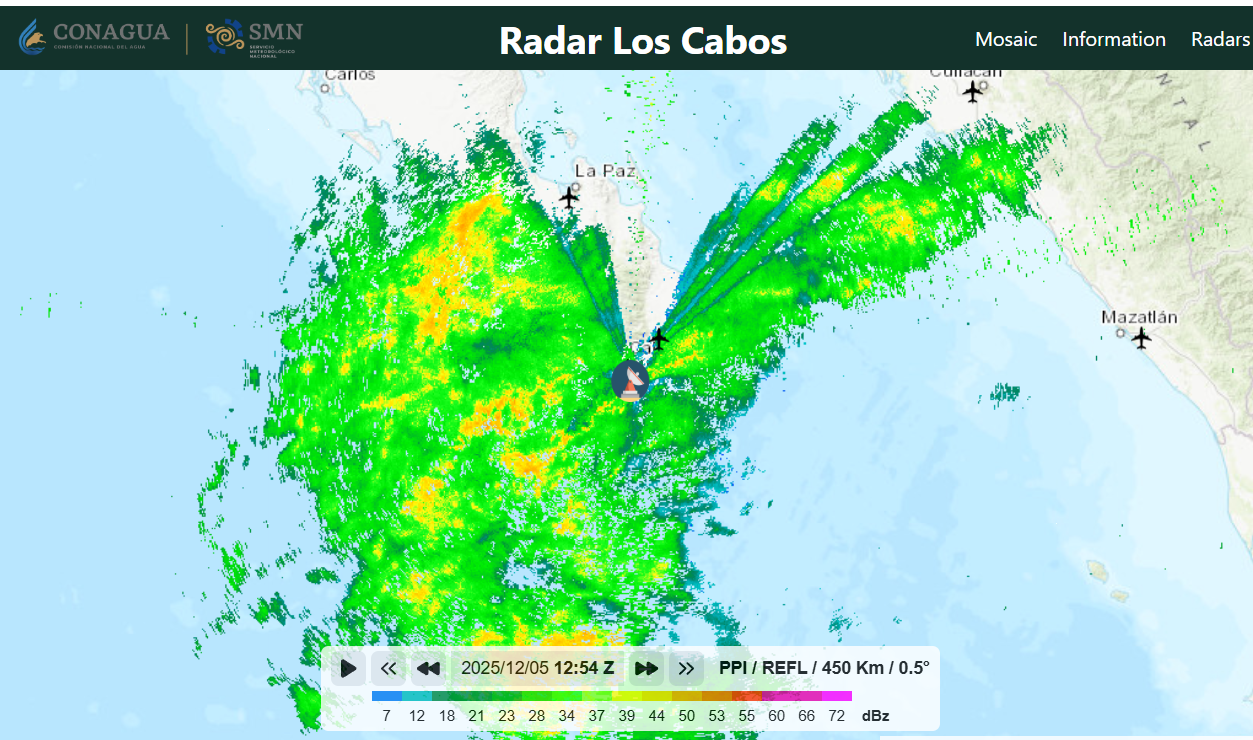¡Buenos dias! Rain gauges from La Paz south to Todos and over to Cabo measured generally 0.75 to 1 inch of rain last night. Due to the power outage, the only local gauge available this morning was at the campground, and it has measured 0.42 inches so far. Cabo weather radar (see image below from around 6 am) showed widespread light to moderate rain continuing to move into southern BCS, and the latest model forecasts show periods of rain continuing for us through today. The big change in the forecast is that the strong storm system bringing us all of this rain and cloud cover has slowed in its eastward progression, so now it looks like we'll have one more day of clouds and possible showers on Saturday. The good news is that all of the latest model forecasts continue to show the storm system finally exiting our region on Sunday, as as surface high presure builds into BCS, we'll see increasing north background flow and mostly sunny skies by Sunday afternoon. A great stretch of windy days is then forecast for our area, as surface high pressure will remain anchored over the interior west of the U.S. from Monday into at least Thursday with solid north background flow continuing here. Other than a few thin, high clouds on Tuesday, we should see sunny skies each day Monday-Thursday, with signficant thermal boosts each day.

(Tides)
- Today…Cloudy with periods of rain. Light and variable wind.
- Saturday…Mostly cloudy with showers possible. North wind 10-12 mph.
- Sunday…Mostly sunny. North wind 18-22 mph.
- Monday…Sunny. North wind 20-24 mph.
- Tuesday…Mostly sunny. North wind 18-22 mph.
- Wednesday…Sunny. North wind 18-22 mph.
- Thursday…Sunny. North wind 16-20 mph.











